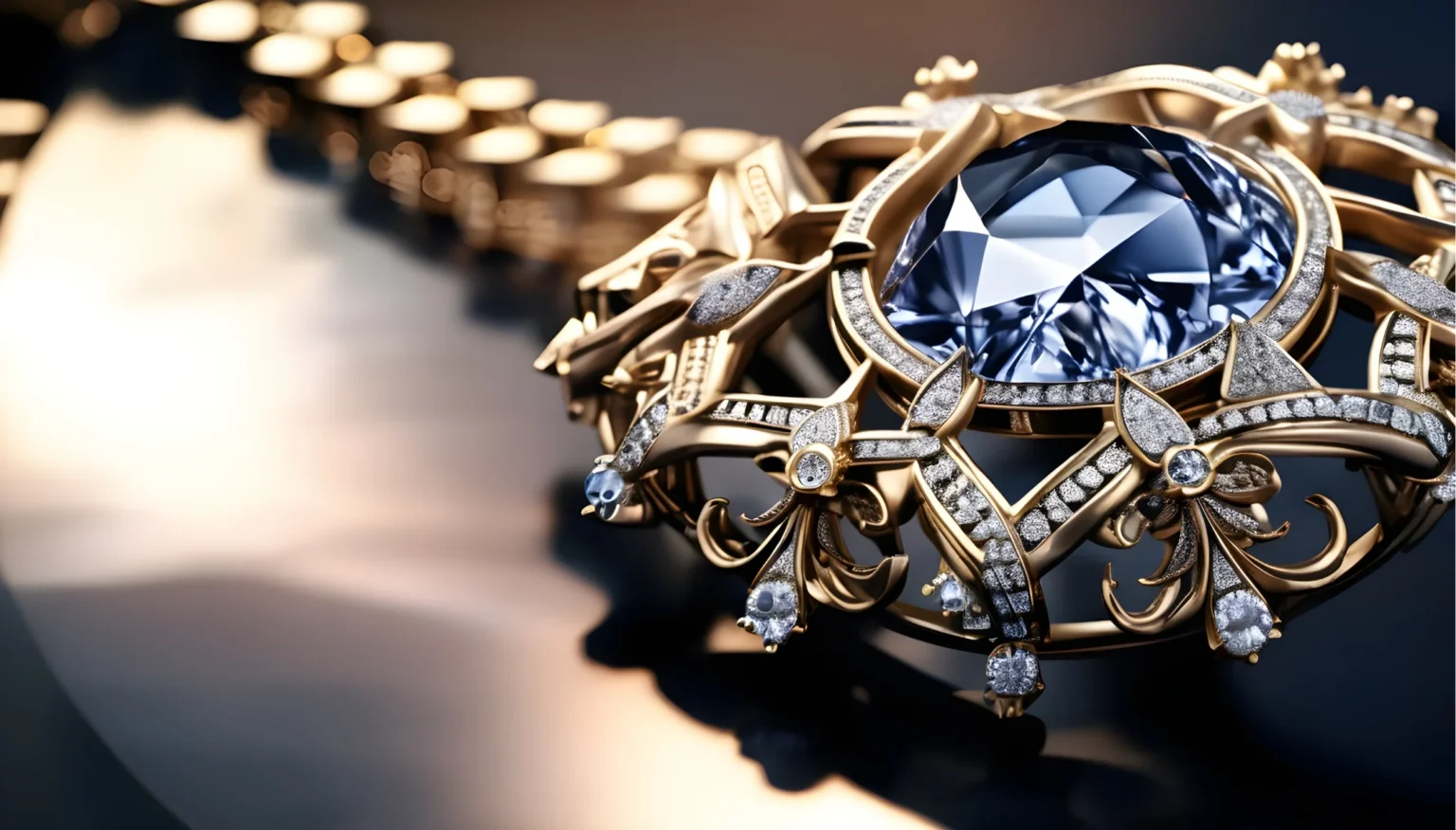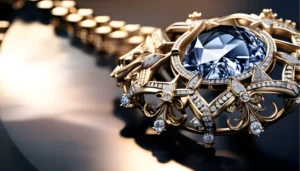Luxury product photography is a sophisticated and artful form of visual storytelling that elevates high-end products to a new level of desirability. With meticulous attention to detail, experienced photographers create images that showcase the craftsmanship and quality of premium products and convey a sense of luxury and exclusivity.
From selecting props and lighting to expert post-processing techniques, luxury product photography transforms everyday objects into objects of desire. In this article, we will delve into the world of luxury product photography and explore the techniques and strategies photographers use to capture the essence of luxury in every image.
How does luxury product photography differ from other types of photography?

Luxury product photography stands out from other types of photography due to its focus on capturing the essence of high-end and premium products in a visually captivating and aspirational way. Unlike traditional product photography, which may prioritize function and practicality, high-end product photography aims to evoke emotions and desires in the viewer.
This type of photography often involves using high-quality props, set designs, and lighting to create a luxurious ambiance and highlight the exquisite details and craftsmanship of the products.
Moreover, it requires keen attention to detail and a deep understanding of the target audience and brand identity. Photographers must carefully consider factors such as brand positioning, aesthetics, and messaging to ensure that the images effectively communicate the luxury and exclusivity associated with the products.
It requires more intricate lighting setups, precise composition, and advanced post-processing techniques to improve the overall visual appeal of the images. The primary aim of these images is not only to display the product in the best possible manner but also to convey a particular lifestyle or status that will appeal to the target audience.
Overall, luxury product photography is a specialized genre, that goes beyond merely showcasing products—it is about creating a visual narrative that conveys sophistication, elegance, and desirability.
How can CGI help with luxury and high-end photography?

Incorporating computer-generated imagery in visual content strategies can take your brand photography to new heights, deliver immersive experiences, and help you connect with discerning consumers on a deeper level. Discover how CGI can benefit your luxury brand by creating a more impactful visual presence.
- Precise product visualization: with CGI, you can create detailed and lifelike 3D models of products, capturing intricate design elements, textures, and materials with utmost accuracy. This level of precision is crucial if you rely on showcasing the craftsmanship and quality of your products.
- Realistic product rendering: digital technology enables you to render products in any desired environment or setting, ensuring they appear realistic and aspirational. This can be particularly beneficial if you wish to create an immersive and luxurious visual experience for customers.
- Customization and personalization: CGI offers unparalleled customization options, allowing you to tailor products according to individual preferences. Whether it’s adjusting colors, patterns, or sizes, with CGI you can create personalized product images that cater to the unique tastes of high-end consumers.
- Dynamic visual storytelling: The 3D model provides the flexibility to create dynamic and captivating visual narratives that engage and resonate with audiences. You can utilize it to showcase product features, demonstrate functionality, or present products in innovative ways that captivate viewers’ attention.
- Consistency in branding: CGI ensures consistent branding across all visual assets by maintaining a cohesive look and feel in product imagery. This consistency is essential for conveying a sense of elegance, sophistication, and exclusivity in your marketing campaigns.
- Time and cost efficiency: By leveraging digital technology, you can streamline your photography processes, reducing the time and resources required for photoshoots, set designs, and post-production work. This efficiency translates to cost savings and faster turnaround times for the creation of high-quality visual content.
- Creative freedom and artistic expression: CGI empowers photographers and designers to explore new creative possibilities and push the boundaries of traditional photography. The imaginative capabilities of CGI enable you to create visually stunning and conceptually rich imagery that resonates with your target audience.
Overall, CGI serves as a powerful tool, offering several benefits. By incorporating CGI into your visual content strategies, you can elevate your photography to new heights, deliver immersive brand experiences, and connect with discerning consumers on a deeper level.
Tips on how to create breathtaking luxury product photography
If you want to create breathtaking luxury product photography, you’ve come to the right place. Our team of experts has years of experience in crafting visually stunning and engaging photographs that effectively showcase the sophistication and quality of high-end products. We understand that every product is unique and requires a tailored approach to capture its essence and appeal. That’s why we offer a free trial for our services, so clients can test our work and see the exceptional quality of our photography.
However, if you want to try to create the photos on your own, here are a few tips that will help elevate the visual appeal and impact of your luxury products.
Master realistic material rendering
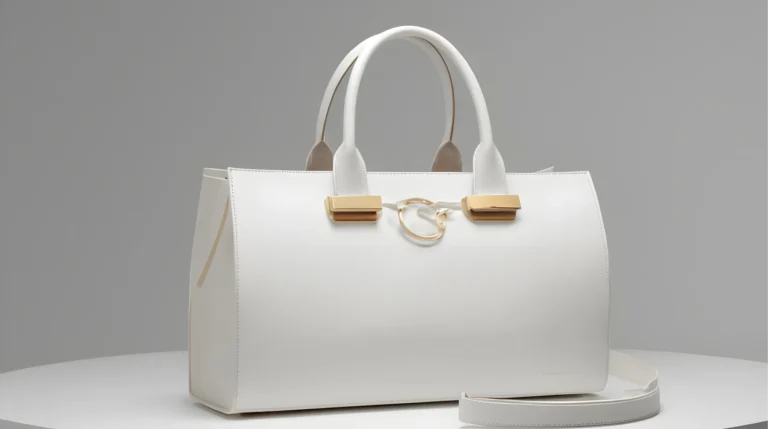
Mastering realistic material rendering in CGI photography is crucial for creating visually stunning and lifelike images that effectively showcase luxurious materials like leather, silk, metals, and gemstones. Perfecting the rendering of these materials can significantly enhance the overall quality and appeal of the photograph, making it more immersive and engaging for the viewer.
To achieve realistic material representation, texture maps, displacement maps, and advanced shaders play a key role in creating lifelike textures and surfaces. Here’s a breakdown of how each of these elements contributes:
- Texture maps. Texture maps are images used to simulate surface details and patterns of materials in renders. By applying texture maps to the surfaces of objects, you can add intricate details such as grain, wrinkles, or patterns to simulate the appearance of real-world materials like leather or silk. Texture maps help enhance the visual realism of materials, making them more convincing and engaging to the viewer.
- Displacement maps. These are used to add depth and three-dimensionality to surfaces. By applying displacement maps, you can create a sense of texture and relief on the surface of materials, such as adding the intricate bumps and crevices of a gemstone or the subtle wrinkles of leather. Displacement maps help achieve a more realistic and tactile representation of materials, enhancing the overall visual appeal of CGI photography.
- Advanced shaders. Shaders help calculate the properties of materials, such as color, reflectivity, transparency, and texture. Advanced shaders offer a wide range of controls and parameters that allow you to manipulate the appearance and behavior of materials with precision and realism. By using them, you can achieve lifelike material representation by adjusting parameters such as glossiness, roughness, specular highlights, and refraction to closely mimic the physical properties of luxurious materials like metals and gemstones.
By leveraging texture maps, displacement maps, and advanced shaders in your CGI photography, you can enhance the realism and visual appeal of luxurious materials, creating immersive and captivating images that effectively showcase the quality and sophistication of high-end products.
These tools and techniques allow you to achieve lifelike material representation, adding depth, texture, and realism to your CGI renders and elevating the overall aesthetic of your luxury photography.
Detailed product visualization
Detailed product visualization is essential in showcasing the craftsmanship, quality, and luxurious features of high-end products. Meticulous attention to detail, especially when rendering intricate features like engravings, stitching, or embossing, can significantly enhance the visual appeal and realism of the item, helping to create a compelling and engaging visual experience for the viewer.
Close-up shots are an effective way to showcase the fine details and craftsmanship of stylish products. By using close-up shots, you can highlight the intricate features, textures, and finishes of the product, allowing the viewer to appreciate the quality and attention to detail that went into its creation. These shots also create a sense of intimacy and engagement, drawing the viewer’s eye to specific elements of the product and creating a more immersive visual experience.
Here are some examples of how meticulous attention to detail and close-up shots can enhance the visual appeal and showcase the craftsmanship of high-end products:
Jewelry. In a computer-generated rendering of a high-quality diamond ring, for example, you can show the intricately designed setting, the clarity and brilliance of the diamonds, and the fine craftsmanship of the ring with great attention to detail. Close-ups can highlight special aspects such as dates or engravings on the ring, the sparkle, and the number of cuts in the diamonds, creating a visually stunning and captivating image that emphasizes the luxury and elegance of the piece of jewelry.
Leather goods. When rendering a luxury leather handbag, for example, detail and accuracy can be seen in the realistic texture of the leather, the quality of the stitching, and the precision of the embossed logo or pattern. Close-ups can focus on the fine stitching, the supple texture of the leather, and the subtle embossing, highlighting the craftsmanship that elevates the product to a higher level of quality and sophistication.
Watches. Although it is challenging to photograph watches, they have their secrets. The attention to detail is evident in the precision of the dial, the complexity of the movement, and the quality of the materials used. Close-ups can show the intricate details of the dial, the gleam of the polished metal case, and the complicated mechanism of the movement, highlighting the craftsmanship and precision engineering that make the watch a truly exceptional piece of luxury craftsmanship.
In each of these examples, accuracy, meticulous attention, and the clever use of close-up shots help to enhance the visual appeal of the high-end products and features that define them. By focusing on intricate details, textures, and finishes, CGI photography can effectively capture the essence of elegance and sophistication, creating visually stunning images that resonate with customers and elevate the perceived value of the products.
Customized environments

Customized environments play a crucial role in enhancing the visual appeal and luxury aesthetic of high-end products in CGI photography. They can complement the style and sophistication of the products, creating a cohesive visual narrative that showcases the product in a context that reflects its premium quality, craftsmanship, and exclusivity.
For example, opulent interiors, exclusive venues, or natural settings can be tailored to evoke a sense of luxury and sophistication that aligns with the brand image and target audience of the product. By creating customized environments that speak to the brand’s aesthetic and values, CGI photography can elevate the perceived value and desirability of the product, positioning it as a symbol of luxury and status.
Natural settings, such as exotic beaches, picturesque landscapes, or majestic mountains, can evoke a sense of elegance and refinement that enhances the visual appeal of high-end products.
By integrating the product seamlessly into a natural environment that reflects the brand’s values and aesthetics, bespoke environments can create a visually stunning and captivating image that captures the essence of luxury and style.
For example, jewelry that has precious stones or materials will work better if placed in an environment that complements those elements. Pearls, for instance, work well with velvet, whereas precious stones can add certain highlights and a touch of elegance.
Overall, customized environments in CGI photography can complement the luxury and style of high-end products by creating a visually captivating and immersive visual experience that resonates with the target audience.
By carefully selecting and crafting environments that align with the brand image and values, computer-generated photography can enhance the perceived value and desirability of the product, creating a compelling visual narrative that elevates the product to a higher level of luxury and sophistication.
Incorporate reflections and refractions
Incorporating reflections and refractions in your CGI product photography can greatly enhance the visual appeal and realism of luxury items, particularly those with reflective surfaces and glass elements.
Experimenting with reflections and refractions can add a sense of depth, dimension, and realism to the image, making the product appear more lifelike and captivating. Using HDRI maps to simulate realistic lighting conditions can further enhance the quality of reflections and bring out intricate details in the product.
Here are some ways how you can incorporate reflections and refractions to enhance your creative photos ideas.
Highlight materials and textures. Reflections and refractions can be used to highlight the materials and textures, such as polished metal, glossy leather, or transparent glass. By capturing the reflections of surrounding elements in the shiny surfaces of the product, the viewer can get a sense of the material’s quality and finish. Refractions, on the other hand, can showcase the transparency and light-bending properties of materials like glass, creating a sense of depth and dimension in the image.
Create a sense of realism. Reflective surfaces and glass elements can be challenging to render realistically. By carefully manipulating them, you can simulate how light interacts with these surfaces in the real world, creating a more lifelike and believable image. This attention to detail can make the product appear more tangible and engaging to the viewer, enhancing the overall visual impact.
Emphasize design features. The light can also be used to emphasize the design features and intricate details. For example, by capturing reflections on a curved metallic surface, the contours and curves of the product can be accentuated, drawing attention to its sleek and elegant design. Similarly, refractions in a glass element, like a diamond or crystal, can magnify the subtle engravings or patterns on the surface, highlighting the craftsmanship and attention to detail put into the product.
Enhance lighting effects. Using HDRI (High Dynamic Range Image) maps to simulate realistic lighting conditions can further enhance your CGI product photography. High Dynamic Range Imaging allows an accurate representation of lighting in the scene, capturing a wider range of light intensities, therefore creating more natural-looking reflections and shadows. This technique can help create a more immersive and visually striking image, bringing out the best in the luxury item’s design and materials.
Here are a few examples of how you can put the above-mentioned tips to use when creating computer-generated images.
- Luxury cars – When rendering a high-end luxury car, incorporating reflections and refractions can be essential to showcasing the glossy paint finish, reflective chrome accents, and glass elements. Experimenting with reflections on the car’s metallic body, windows, and mirrors can create a mirror-like shine that adds to the overall sense of elegance and sophistication. Refractions in the headlights, taillights, and windows can enhance the realism of the image, making the car look more dynamic and vibrant.
- Designer handbags – For a CGI render of a luxury designer handbag with metallic hardware and glossy leather, reflections and refractions can help to highlight the intricate details and craftsmanship of the product. By simulating reflections on the metal hardware, such as buckles and studs, and capturing refractions in the glossy leather, the handbag can appear more tactile and realistic. Using HDRI maps to simulate natural lighting conditions can further enhance the reflections and bring out the subtle textures and finishes of the materials.
- Luxury watches – When creating computer-generated imagery of a high-end luxury watch with a, let’s say, sapphire crystal, polished metal casing, and intricate dial details, reflections, and refractions can make the watch appear more visually appealing and luxurious. Experimenting with reflections on the polished metal casing and refractions in the sapphire crystal can enhance the brilliance and clarity of the watch while using HDRI maps to simulate realistic lighting conditions can capture the intricate reflections and details in the design.
In conclusion, incorporating reflections and refractions is a powerful way of enhancing visual appeal, realism, and storytelling. Experiment with different techniques to capture intricate reflections and elevate the overall quality of your images. This will make your product appear more luxurious, aspirational, and visually captivating.
Dynamic product presentations
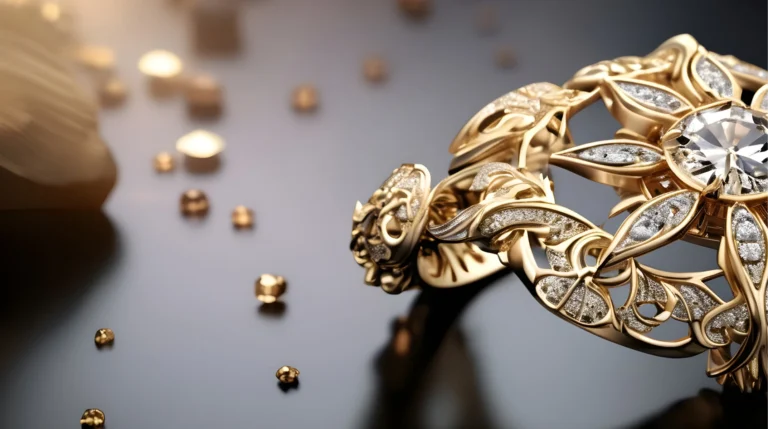
Consider implementing dynamic animations to showcase products from multiple angles, emphasizing their three-dimensional beauty and unique features. By incorporating movement and interactivity into the presentation, viewers can get a more immersive and engaging experience, allowing them to explore the product from various perspectives and appreciate its design and details more interactively.
Here are some ways in which dynamic animations and camera movements can be used to enhance product presentations.
Showcase products from multiple angles. Products can presented from various angles. This allows viewers to see the product from all sides and appreciate its design and features in detail. This can help create a more comprehensive and engaging viewing experience, giving viewers a better understanding of the product’s form, functionality, and aesthetics.
Emphasize three-dimensional beauty. Dynamic animations can highlight the three-dimensional beauty of products by adding depth and dimension to the presentation. Incorporate subtle movements and rotations. By doing so, viewers can get a sense of the product’s shape, proportions, and contours, enhancing their appreciation of its three-dimensional beauty and craftsmanship.
Use camera movements to highlight different facets. Subtle camera movements or rotations can be used to highlight different facets of the product, drawing attention to specific features or details. For example, a close-up rotation can emphasize the intricate engravings on a luxury watch, while a panning movement can showcase the smooth curves and reflective surfaces of a high-end car.
These dynamic camera movements can help create a more dynamic and engaging presentation, allowing viewers to focus on different aspects of the product and explore its unique qualities.
Overall, implementing dynamic animations and camera movements in product presentations can enhance the viewer’s experience, making the presentation more engaging, interactive, and immersive.
Focus on lighting techniques to create storytelling visuals
Focusing on lighting techniques can create breathtaking and memorable storytelling visuals. Experimenting with advanced lighting setups can help create dramatic highlights and shadows that enhance the visual appeal of the product. Here’s how advanced lighting techniques can be used to create storytelling visuals for luxury items.
- Add dramatic highlights and shadows. Dramatic highlights can draw attention to specific features of the product, while deep shadows can add depth and mystery, creating a sense of elegance and sophistication. These lighting effects can enhance the visual appeal of luxury items, giving them a sense of drama and allure.
- Develop CGI scenes that tell a story. Lighting can be used to set the mood and atmosphere of the scene, helping you to convey a particular story or lifestyle associated with the luxury product, and in turn, with your brand. By carefully crafting the lighting setup to create a specific ambiance, such as a soft and romantic glow or a bold and glamorous lighting scheme, you can evoke an emotional response from viewers and create a sense of narrative around the product. This can help establish a connection with the audience and reinforce the luxury branding of the item.
- Use studio lighting techniques to simulate real-world conditions. Studio lighting techniques can be used to simulate real-world lighting conditions, such as natural sunlight, soft ambient light, or dramatic spotlighting. By replicating these lighting scenarios in the CGI scene, you add a sense of realism and authenticity, making the product appear as if it were in a real-world setting. This can help viewers envision the luxury item in context, such as at a high-end event, a glamorous photo shoot, or an exclusive setting, enhancing the overall storytelling and visual impact of the presentation.
In conclusion, experimenting with advanced lighting setups in CGI product photography can help create visually compelling and storytelling visuals for luxury items. By using dramatic highlights and shadows, creating a story around the item, and using specific lighting techniques your product will captivate and resonate with your viewers.
Fine-tune camera angles
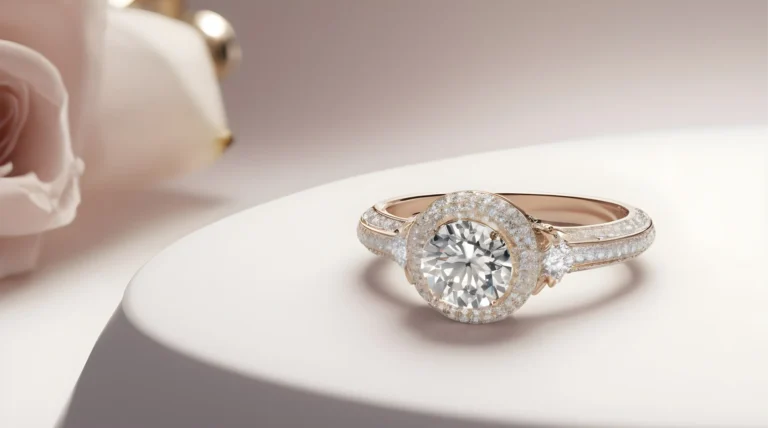
Experimenting with different camera angles is a crucial aspect of creating visually appealing and captivating visuals for luxury items. Fine-tuning camera angles can help showcase the product in the best possible light, emphasizing its key features and unique selling points.
Find the most flattering perspectives. When photographing luxury items, it’s essential to find angles that highlight the product’s design, craftsmanship, and details.
Experiment with different camera angles to determine the most flattering perspectives that showcase the item in the best light. Consider shooting from above to emphasize the product’s elegance and form, or from a low angle to showcase its intricate details and craftsmanship.
Play around with different perspectives to find the angle that best accentuates the luxury item’s unique qualities.
Consider unconventional angles. To add a unique and creative touch to your visuals, consider experimenting with unconventional camera angles. Think outside the box and try shooting from unusual perspectives to create visually interesting and dynamic images.
For example, shooting from a bird’s eye view or a close-up shot from below can offer a fresh and unique perspective that captures the viewer’s attention. Unconventional angles can help your luxury item stand out and make a memorable impression on viewers.
Whether you’re highlighting the product’s design, craftsmanship, or unique features, finding the right angles can make a significant impact on the overall visual appeal of your luxury item presentation. Be creative and try unconventional angles to add a unique and distinctive flair to your visuals.
Emphasize brand identity
Emphasizing brand identity is essential to create a cohesive and strong visual representation of your brand. The visuals should reflect the values, aesthetics, and lifestyle associated with your brand, to resonate with the target audience and reinforce brand recognition. To do so, consider the following tips.
Use consistent color schemes. Use color psychology to evoke the desired emotions and associations with the brand. Select a color palette that aligns with your brand image and resonates with the target audience. Ensure that the colors used in the CGI visuals are consistent with the brand’s overall color scheme to create a cohesive and recognizable look.
Incorporate visual elements that reflect the brand’s values and style. This could include motifs, patterns, textures, or symbols that are associated with the brand’s identity. By incorporating them, you can reinforce the brand’s image and create a cohesive visual story.
Pay attention to stylistic choices such as lighting, composition, and aesthetics to ensure they align with your brand identity. Consider the mood, tone, and atmosphere and incorporate them into the visuals. Whether it’s a sleek and modern aesthetic or a classic and elegant style, make sure that the stylistic choices in CGI photography reinforce the brand’s image without overshadowing it.
Always choose fonts that reflect the public image you want to create for your brand, whether it’s elegant and sophisticated or modern and minimalist, and be consistent. Consistent typography across all visuals helps to reinforce brand recognition and create a cohesive brand experience.
Incorporate brand messaging or taglines into the CGI visuals to communicate values and key messages. Consider how you can integrate brand slogans, mission statements, or key selling points into the visuals in a visually engaging and effective way. By aligning the messaging with the brand identity, you can reinforce the brand’s positioning and create a deeper connection with the audience.
When creating CGI visuals for luxury products, consider incorporating lifestyle imagery that reflects the target audience and its aspirational lifestyle. Showcasing the products in context, such as in a luxurious setting or being used by models that embody the target demographic, can help create a narrative that resonates with consumers.
Use CGI photography to tell a visual story. Consider creating a series of visuals that convey the brand’s history, craftsmanship, or inspiration behind the products. By weaving a story through the visuals, you can create a deeper emotional connection with customers and compellingly reinforce your identity on the market.
Collaborate closely with the marketing team to ensure that the visuals accurately represent the brand identity and messaging. Work together to brainstorm ideas, review mood boards, and provide feedback on the visual elements to ensure that the CGI photography aligns with the overall marketing strategy and objectives.
By incorporating these additional strategies into your CGI photography for luxury products, you can create visually captivating and impactful visuals that effectively emphasize the brand identity and resonate with the target audience.
Conclusion
In conclusion, emphasizing brand identity in CGI photography for luxury products is crucial to creating a cohesive and impactful visual representation of the brand. By paying attention to these details, you can create visually compelling and engaging visuals that effectively communicate the luxury brand’s image, values, and lifestyle, ultimately driving brand awareness and customer engagement.
FAQ
How can CGI photography enhance the visual appeal of luxury products?
CGI photography allows for precise control over lighting, textures, and details, resulting in visually stunning and realistic images that showcase the quality and craftsmanship of luxury products in a way that traditional photography may not be able to achieve.
How can brand identity be emphasized in CGI photography for luxury products?
Brand identity can be emphasized in CGI photography through the consistent use of color schemes, typography, visual elements, and messaging that align with the brand’s personality and values, creating a strong and memorable brand image in the minds of consumers.
Why is collaboration with the branding team important in CGI photography for luxury products?
Collaboration with the branding team ensures that the CGI visuals accurately represent the brand identity, messaging, and marketing strategy, helping to create a cohesive and impactful visual representation of the luxury brand that resonates with the target audience.
How can lifestyle imagery be incorporated into CGI photography for luxury products?
Lifestyle imagery can be incorporated into CGI photography by showcasing the products in context, such as in luxurious settings or being used by models that embody the brand’s target demographic, creating a narrative that resonates with consumers and reinforces the brand’s image and values.
What role does storytelling play in CGI photography for luxury products?
Storytelling through CGI photography helps to create a deeper emotional connection with customers by conveying the brand’s history, craftsmanship, or inspiration behind the products, weaving a narrative that aligns with the brand’s values and resonates with the target audience, ultimately enhancing brand engagement and loyalty.
